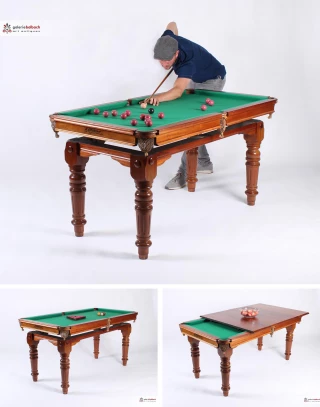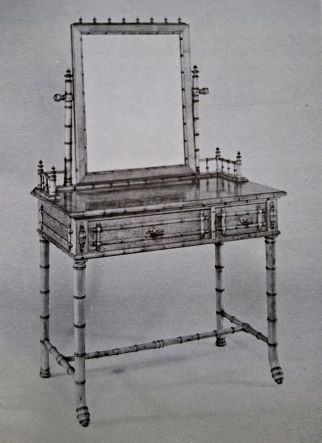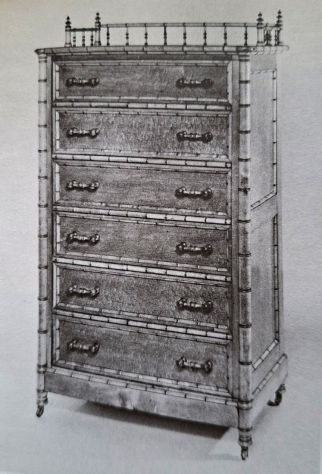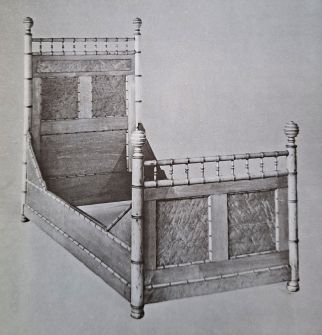Faux bamboo style furniture
Faux bamboo furniture is one of the stylistic forms of the late 19th century that received little attention in German-speaking countries.
The apparent bamboo applications were made from light-coloured, local wood - usually maple or beech - whose surfaces were turned and carved with such precision that they deceptively imitated the characteristic knots, limbs and unevenness of real bamboo.
Japonism in Europe
The preference for Asian forms was by no means new in the 19th century. Chinoiseries had already characterised the European artistic landscape in the 18th century. This enthusiasm was revitalised in the historicism of the 19th century - now expanded to include influences from Japan, which took part in the Paris World Exhibition for the first time in 1867 after a long period of cultural isolation. Japanese lacquer work quickly attracted attention and Paris developed into the centre of Japonism. But in Vienna, Venice and other European cultural metropolises, too, works of craftsmanship were created that took up and reinterpreted Far Eastern forms.
Faux bamboo in America
However, a special form of this fashion also emerged in America. There, the enthusiasm for bamboo furniture began around the time of the World's Fair in Philadelphia in 1876 and reached its peak in the 1880s. During this phase, numerous pieces of furniture were created that imitated real bamboo but were made entirely from local woods.
In the late 1870s, the art critic Clarence Cook described the appeal of East Asian bamboo furniture and referred to Vantine's New York Emporium, which imported and sold such pieces. Cook described them as "capital stuff" - excellent for furnishing a contemporary country house, especially for bedrooms, which should be perceived as light, bright and summery. A report in The Decorator and Furnisher (1886) describes an "exceptionally tasteful bedroom" made of real or artificial bamboo, which stood out for its friendly effect.
Producers of imitation bamboo were Nimura and Sato in Brooklyn and J. E. Wall in Boston.
A style with recognition value
Although the inspiration was Far Eastern, the furniture itself remained Western in character. Strict, clear lines and large panelled surfaces made of bird's-eye maple place it in the context of the reform furniture movement of the 1870s and 80s. They therefore combine an exotic look with a familiar design vocabulary, making them one of the striking hybrid forms of the late 19th century.
If you would like to delve deeper into the subject of East Asian influence in Western furniture design, we recommend the following book: Rainer Haaff - Prachtvolle Stilmöbel from page 568.
Also interesting

The sawn veneer
For the love of wood The beauty of an old sawn veneer cannot be compared with modern veneers. Whether [...]Read more

Antique snooker table
The fine English way! I have fond memories of this great snooker table from around 1910. The well-known [...]Read more





